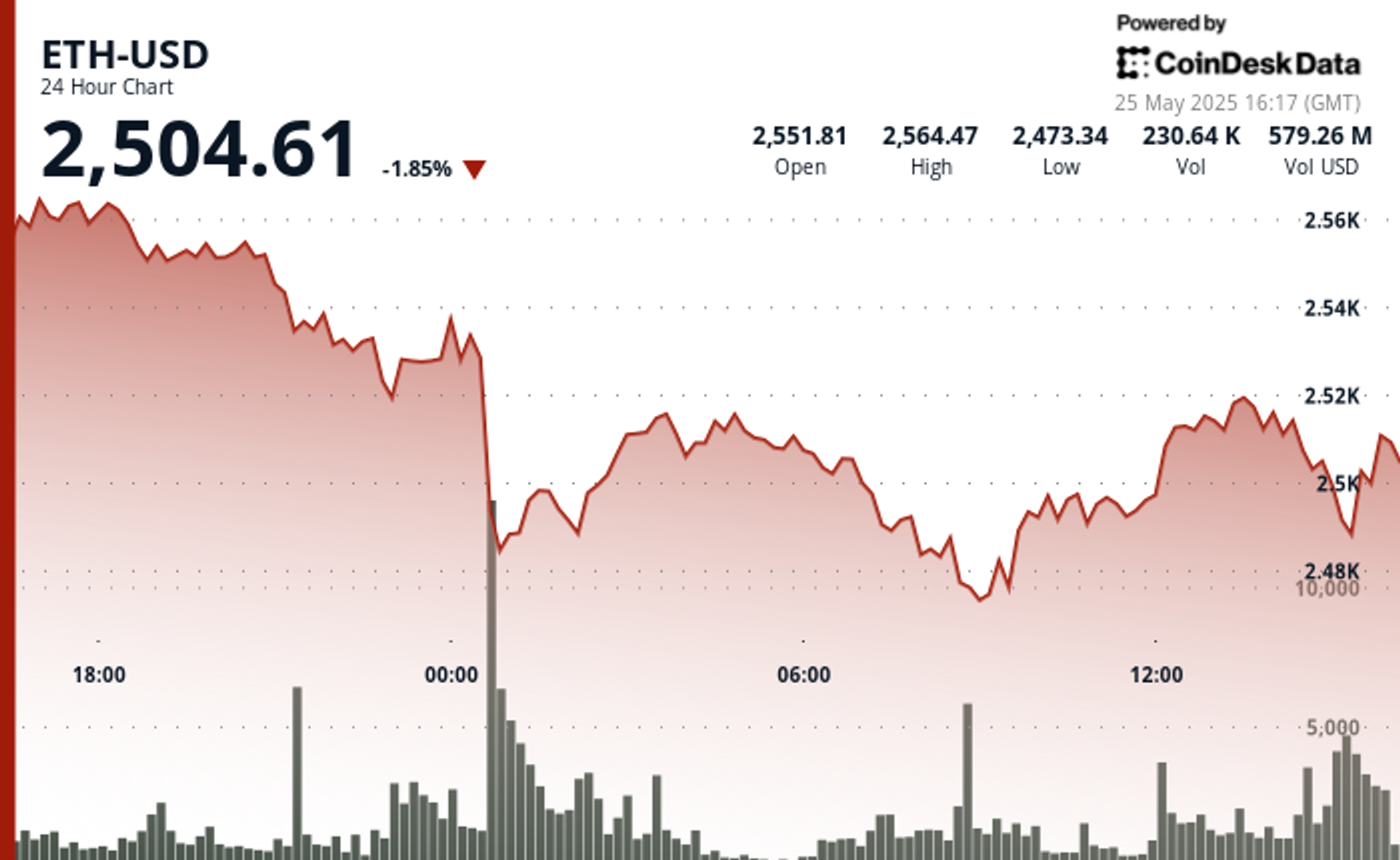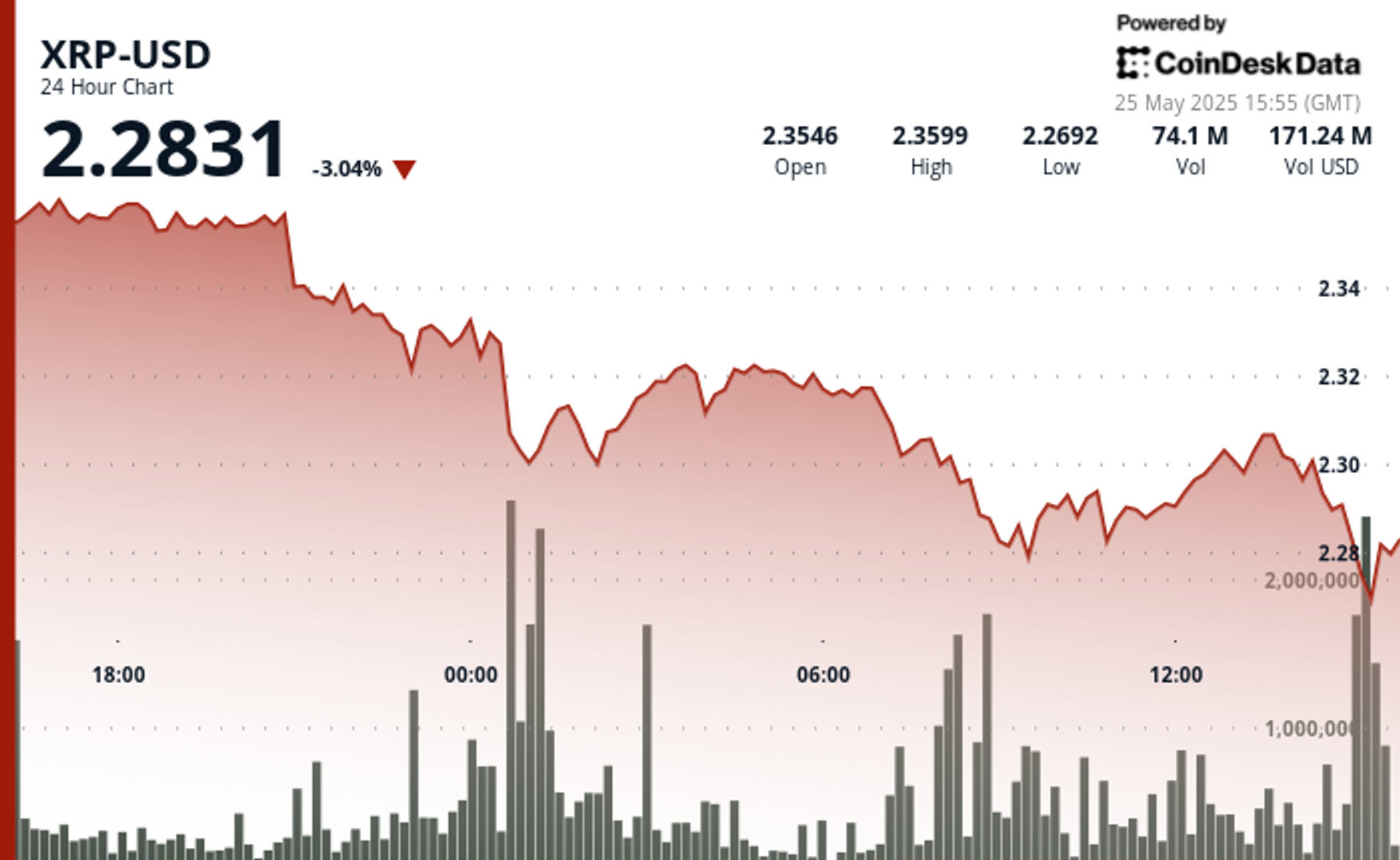Uncategorized
2025 Will Be the Year of Decentralization: 5 Predictions

It took a while, but 2024 was the year bitcoin fulfilled a million end-of-year predictions to finally hit $100,000. Uncork the champagne if you like, but I believe bitcoin’s breach of this historic barrier is the harbinger of something even bigger, and that 2025 will be the long-awaited Year of Decentralization.
The reason has very little to do with bitcoin’s soaring valuation. Anyone who’s had even half an eye on the decentralized technology landscape for the last year will have witnessed an explosion in new use cases. Many are quirky, others are cool and a few promise to solve some of the biggest challenges facing humanity today. Together, they are sending decentralization’s utility into the stratosphere via measurable impact rather than mere speculation. More importantly, they provide a host of compelling reasons for people to adopt and onboard to decentralization in 2025.
Buckle up then, as we take a whistlestop tour around my top five predictions for the year ahead.
1. Bitcoin takes a shot at the moon.
It wouldn’t be December without bold predictions about bitcoin’s price. But instead of tossing out another $250K or $500K figure like everyone else, let’s explore a more radical possibility: bitcoin becoming the foundation of a global strategic reserve.
The fundamentals support this possibility. If a major world power (or an unexpected one) officially adopts bitcoin as part of its treasury reserves, the current price predictions could bUe obliterated. We’re not just talking $500,000; $1 million or even higher could become the new normal, driven by nations’ scrambling to secure the world’s rarest digital asset.
Even without geopolitical adoption, bitcoin’s scarcity alone makes it a unique asset. There will only ever be 21 million BTC in existence, a far smaller number than the 60 million dollar millionaires worldwide. With institutions and now potentially governments buying up huge reserves of bitcoin, it’ll soon be a tiny minority who can hope to own just one — that is, unless they were smart enough to invest early.
Add in the continued growth of bitcoin’s utility as a decentralized network and its role as an alternative to fiat instability, and we’re looking at exponential growth.
But here’s the wildcard: what happens when bitcoin’s price is no longer driven just by markets, but by nations hedging against each other in the race for digital dominance? That’s where things truly get edgy. With several countries already piloting bitcoin treasury programs, $500,000 might just become the starting point.
2. Depinners get rich, quickly.
Someone has to admit it: the crypto industry sometimes does a bad job of selling its vision to the world. Phrases like “financial self-sovereignty” mean little to the average person in the street — unless, of course, they’ve had their bank account shut down.
So how’s this for a sales pitch? Decentralization enables you to earn money for doing absolutely nothing. No, it’s not too good to be true, because that’s what Depinners are already doing. By harnessing and “farming” your computer resources, such as the processor on your phone, anyone can earn passive income by contributing to the new paradigm of decentralized physical infrastructure (DePIN).
The DePIN revolution is a superb example of how decentralization transforms the concept of ownership and puts (earning) power into people’s hands. Equally important, it’s sparking incredible new use cases that are already solving problems from noise pollution to energy grid management to natural disaster alerts. Even though it’s still in its infancy, the almost infinite possibilities of DePIN applications mean that in 2025 early adopters could soon be earning up to 5% of the average person’s income — all without lifting a finger.
3. Memecoins get serious.
Here’s a prediction for what won’t happen in 2025: “serious” financial commentators still won’t accept that memecoins have any utility, or that they are anything other than an internet in-joke that went too far. And they’ll be increasingly, hilariously wrong.
In some respects, I can’t really blame them: on the face of it, most memecoins seem like a joke, especially the quintessential, ubiquitous DOGE. But ignore them at your peril: memecoins are growing up fast and they are evolving beyond their origins. These tokens’ value is driven less by speculation than by their ability to bring people together on projects ranging from the playful to the political.
In fact, memecoins have a great deal to teach us about the nature of community and participation in the decentralized world. In 2025, we’ll see brands wake up to memecoins’ extraordinary potential to reach new audiences, foster new communities and reimagine the relationship between businesses and consumers. To be sure, there’s money to be made in memecoins — but over the long-term, their value to forward-looking brands will be much more significant than their token price.
4. Time Magazine chooses an Android of the Year.
In 2025, I predict that Time Magazine’s Person of the Year…won’t be a person at all. For the first time in its 98-year existence, the annual award will go to what I’m calling “Mrs Humanoid” — a composite character symbolizing the rise of AI and robotics, and the integration of both into human society.
This humanoid robot (or “gynoid,” as they’re sometimes referred to) will represent the incredible impact that these twin technologies are making across a range of sectors, from healthcare to education, demonstrating capabilities that blur the lines between human and machine labor. Time Magazine has chosen some controversial characters in the past (check out its 1938 “Person of the Year”), but I don’t think there’s anything remotely strange about choosing a robot. I’d even go a step further and say that it would be irresponsible to not put one on the front cover.
The rapidity of the rise of robots’ should be sparking global discussions on the ethics of AI, as well as how work, privacy and human identity are being redefined. Many of these changes are incredibly positive, some are morally gray or still obscure, and a few are potentially incredibly alarming. This conversation should therefore take place alongside climate change as one of the defining issues of our century. Putting Mrs. Humanoid on Time’s cover would be an important step towards focusing minds, especially regulators’ and legislators’, about how we develop new regulatory frameworks to address the challenges and seize opportunities presented by such advanced AI systems.
5. Traditional search loses ground to AI.
Will 2024 be the last year we “Googled” something we didn’t know? With the advent of Gen AI applications, there’s every reason to think so.
Tools like ChatGPT and Perplexity represent the biggest change to search since the emergence of Google a quarter of a century ago. Harnessing the power of AI not only enables more accurate results, thanks to its ability to understand semantics, but also changes the dynamics of search.
These new applications pass the Turing Test with flying colors, enabling people to have meaningful conversations about everything from cooking to philosophy. As such, they represent a fundamental change in our emotional relationship with technology, and make “traditional” search — as exemplified by Google’s long, near-total monopoly— look positively prehistoric.
Just as the emergence of the internet sparked an “SEO arms race” among brands fighting for that all-important first results page of Google, in 2025 we’ll see businesses begin to figure out how to remain relevant in the age of AI-powered search.
One of the biggest changes we’ll see is the evolution of websites, which will increasingly cater to AI agents rather than humans. In 2025, we’ll see web domains take on a new significance, with the most successful brands being those that harness onchain domains to safeguard consumer data, integrate AI functionality and deliver revolutionary online experiences for their audiences.
Whether all, some, or none of these predictions come to pass, one thing is beyond doubt — as we cross into the latter half of the 2020s, decentralization is no longer the future; it’s about to become an inescapable, inextricable part of everybody’s present.
Uncategorized
Ethereum Surges After Holding $2,477, Fueled by Very Heavy Trading Volume

Global economic tensions and trade disputes continue to influence cryptocurrency markets, with ETH showing resilience despite broader market uncertainty.
The second-largest cryptocurrency is currently navigating a critical technical zone between $2,500-$2,530, which analysts identify as immediate resistance that must be overcome for continued upward movement.
Institutional interest remains strong, with spot Ethereum ETFs recording consecutive days of positive inflows, signaling growing confidence from larger investors despite the recent volatility.
Technical Analysis Highlights
- 24-hour ETH price action revealed a substantial 3.5% range ($99.85).
- Sharp sell-off during midnight hour saw price plummet to $2,477.40, establishing a key support zone.
- Extraordinary volume (291,395 units, nearly 3x average) confirmed the significance of the support level.
- Buyers stepped in at the $2,467-$2,480 support band, confirmed by high-volume accumulation during the 08:00-09:00 period.
- Recent price action shows bullish momentum with ETH reclaiming the $2,515 level.
- Potential higher low pattern suggests the correction may have found its bottom.
- $2,520-$2,530 area remains the immediate resistance to overcome for continued upward movement.
- Significant bullish surge at 13:35 saw price jump from $2,515.85 to $2,521.79, accompanied by exceptional volume (5,839 units).
- Sharp reversal occurred at 14:00, with price dropping 5.07 points to $2,508.02 on heavy volume (4,043 units).
- Hourly range of 14.46 points ($2,508.02-$2,522.48) demonstrates market indecision.
External References
- «Ethereum Holds Above Key Prices – Data Points To $2,900 Level As Bullish Trigger«, NewsBTC, published May 24, 2025.
- «Ethereum Forms Inverse H&S – Bulls Eye Breakout Above $2,700 Level«, Bitcoinist, published May 25, 2025.
- «Ethereum Price Analysis: Is ETH Primed for a ‘Healthy’ Correction?«, CryptoPotato, published May 25, 2025.
Uncategorized
XRP Plunges Below $2.30 Amid Heavy Selling Pressure

Global economic tensions are weighing heavily on cryptocurrency markets as XRP experiences a significant correction amid heavy selling pressure.
The recent announcement of potential 50% tariffs on European Union imports by the US government has triggered widespread market uncertainty, with XRP falling alongside most major cryptocurrencies despite Bitcoin recently reaching new all-time highs.
Technical analysts point to critical support at the $2.25-$2.26 range, with market watchers warning that a break below this level could trigger deeper corrections toward the $1.55-$1.90 zone.
Meanwhile, institutional interest remains strong with Volatility Shares launching an XRP futures ETF and leveraged ETF inflows surging despite the price dip, suggesting Wall Street continues accumulating positions during market weakness.
Technical Analysis Highlights
- XRP underwent a notable 3.46% correction over the 24-hour period, with price declining from $2.361 to $2.303, creating an overall range of $0.084 (3.57%).
- The most significant price action occurred during the midnight hour (00:00), when XRP plummeted to $2.297 on exceptionally high volume (37.1M), establishing a strong volume-based support zone.
- A secondary sell-off at 08:00 saw price touch the period low of $2.280 with the highest volume spike (39.9M), confirming a double-bottom formation.
- In the last hour, XRP experienced significant volatility with a recovery attempt following the earlier correction.
- After reaching a low of $2.297 at 13:11, price formed a base around $2.298 before staging a substantial rally beginning at 13:27, peaking at $2.307 at 13:36-13:39 with exceptionally high volume (627K-480K).
- This bullish momentum created a clear resistance zone at $2.307, which was tested multiple times.
- The final 15 minutes saw profit-taking pressure emerge, with price retracing to $2.300, establishing a short-term support level that aligns with the psychological $2.30 threshold.
External References
- «XRP Price Watch: Consolidation or Collapse? Market Holds Breath Near $2.35«, Bitcoin.com News, published May 24, 2025.
- «XRP Price Prediction For May 25«, CoinPedia, published May 25, 2025.
- «XRP Risks Fall To $1.55 If This Support Level Fails – Analyst«, NewsBTC, published May 25, 2025.
Uncategorized
Bitcoin Drops Below $107.5K as Trump Tariff Threat Triggers Crypto Sell-Off

Bitcoin’s recent pullback has established strong volume-based resistance near $108,300, with support forming in the $106,700-$107,000 zone.
The correction accelerated with a notable price surge from $107,373 to $107,671 between 13:06-13:36, followed by a sharp reversal.
Technical analysis suggests Bitcoin is now trading within a compression zone, trapped between two major fair value gaps that will determine the upcoming market direction.
If bulls reclaim the $109K to $110K area, price could push toward resistance beyond $112K, while a break below $107,000 might test liquidity around $106K.
Technical Analysis Breakdown
- The decline accelerated during the 22:00-23:00 hour on May 24th with exceptionally high volume (16,335 BTC), establishing a strong volume-based resistance near $108,300.
- Support has formed in the $106,700-$107,000 zone where buyers emerged during the 09:00-10:00 period on May 25th, though recovery attempts have been modest with price consolidating around $107,500.
- The overall technical structure suggests a short-term bearish trend with potential for further consolidation before directional clarity emerges.
- Bitcoin experienced significant volatility with a notable price surge from $107,373 to $107,671 between 13:06-13:36, followed by a sharp reversal that saw prices decline to $107,393 by 14:00.
- The most substantial price movement occurred during the 13:35 minute candle where BTC jumped nearly $150 with exceptionally high volume (148.76 BTC), establishing temporary resistance around $107,630.
- Support formed near $107,400 where buyers emerged during the final minutes of the period, though the overall technical structure suggests continued consolidation within the broader correction from the $109,239 high.
External References
- «Bitcoin Price Prediction for May 25: Will Bulls Defend $108K or Is a Deeper Drop Ahead?«, Coin Edition, published May 24, 2025.
- «Why is Bitcoin Price Dropping Now? Will BTC Price Go Down to $100K?«, CoinPedia, published May 24, 2025.
- «Bitcoin Price Analysis: BTC Displays Signs of Weakness Following New All-Time High«, CryptoPotato, published May 25, 2025.
-

 Fashion7 месяцев ago
Fashion7 месяцев agoThese \’90s fashion trends are making a comeback in 2017
-

 Entertainment7 месяцев ago
Entertainment7 месяцев agoThe final 6 \’Game of Thrones\’ episodes might feel like a full season
-

 Fashion7 месяцев ago
Fashion7 месяцев agoAccording to Dior Couture, this taboo fashion accessory is back
-

 Entertainment7 месяцев ago
Entertainment7 месяцев agoThe old and New Edition cast comes together to perform
-

 Business7 месяцев ago
Business7 месяцев agoUber and Lyft are finally available in all of New York State
-

 Sports7 месяцев ago
Sports7 месяцев agoPhillies\’ Aaron Altherr makes mind-boggling barehanded play
-

 Sports7 месяцев ago
Sports7 месяцев agoSteph Curry finally got the contract he deserves from the Warriors
-

 Entertainment7 месяцев ago
Entertainment7 месяцев ago\’Better Call Saul\’ has been renewed for a fourth season





